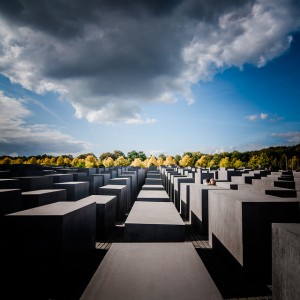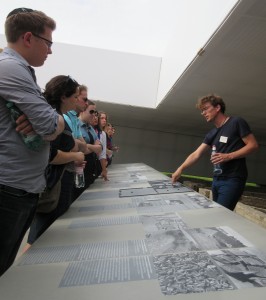It’s a common enough refrain that we’ve all heard before: should a Holocaust memorial commemorate the six million Jews lost in the Holocaust or the eleven million total people? One could certainly argue merits on both sides. On the one hand, Jews were Hitler’s foremost target: no other group was vilified or persecuted nearly as zealously. On the other hand, once you add in the Romani, the homosexuals, the trade unionists, the Freemasons, the mentally challenged, and other persecuted groups – well, the number of victims nearly doubles. Doesn’t that show even more thoroughly the extent of the Nazis’ evil?
With this question in mind, let us ask another: doesn’t it seem strange for a Jewish group traveling in Germany to visit a concentration camp where they didn’t send Jews?
It’s a reasonable question. The reason for visiting Sachsenhausen in particular was a pragmatic one: we’re Berlin-based and Sachsenhausen is near Berlin. But I think it was useful for helping our group of American Jews to break through the tunnel vision that some of may have when it comes to the victims of Nazi atrocities.
Sachsenhausen was a labor camp for political prisoners. Compared to the extermination camps, it was luxury accomodations but it was still not a place one would want to be for any amount of time. It had everything one would expect from a concentration camp: inhuman living conditions, rancid food, forced labor, torture and death. Yet this was where they sent the prisoners they liked more.
One famous resident of Sachsenhausen was Pastor Martin Niemöller, who wrote:
First they came for the Socialists, and I did not speak out because I was not a Socialist. Then they came for the Trade Unionists, and I did not speak out because I was not a Trade Unionist. Then they came for the Jews, and I did not speak out because I was not a Jew. Then they came for me and there was no one left to speak for me.
That’s not just hyperbole; they really did come for him.
There was a gas chamber at Sachsenhausen but it was basically used for experimentation. They did a lot of experimenting there. Poisoned bullets was such an experiment. So was standing prisoners against a measuring rod for a “medical exam,” only to shoot them in the back of the neck through a crack in the wall. “Better than Birkenau” is an incredibly low bar.

Memorial to the Murdered Jews of Europe, impossible to avoid, near Berlin’s center. flickr
The world tends to think of the Holocaust primarily as an anti-Jewish atrocity. That Jews were first on Hitler’s list is a fact that no one is about to forget – least of all we Jews. Here in Berlin, reminders of that reality are omnipresent, including the huge and centrally-located Memorial to the Murdered Jews of Europe. We are in no danger of losing this dubious honor if we occasionally pause to remember the others who shared our persecution. If anything, doing so will only help us to develop the type of empathy that Pastor Niemöller lamented not having had sooner.
—–

